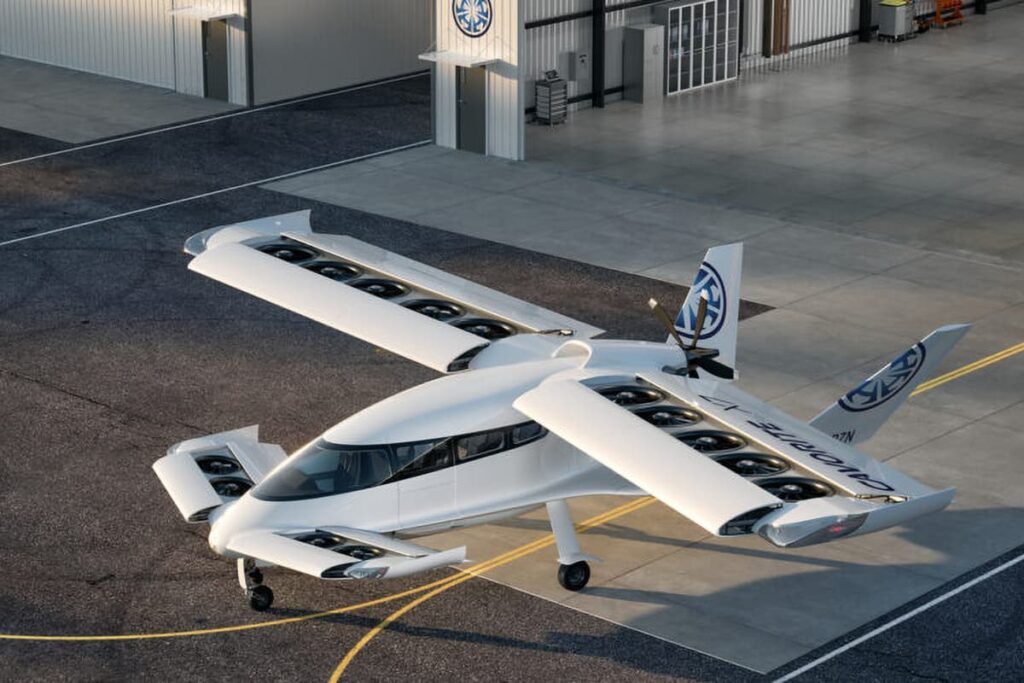In a major breakthrough for the future of aviation, Canadian aerospace innovator Horizon Aircraft has successfully completed the world’s first fan-in-wing transition flight with its hybrid-electric VTOL prototype, the Cavorite X7. This achievement marks a historic moment in the evolution of vertical flight technology and paves the way for quieter, safer, and more efficient electric aircraft.
A Radical Approach to VTOL
Unlike conventional eVTOL aircraft that rely on exposed rotors or tilt mechanisms, the Cavorite X7 utilizes embedded lift fans within its wings and canards. During vertical takeoff, the aircraft deploys 16 electric fans hidden inside the wing surfaces. Once airborne, these wing panels close and seal over the fans, transforming the aircraft into a sleek fixed-wing configuration optimized for forward flight.
This transition was performed successfully during recent test flights, demonstrating not only the reliability of the fan-in-wing system but also its potential to revolutionize urban air mobility (UAM) and hybrid-electric aviation.
A Milestone in Transition Flight
The transition phase—the shift from hovering to horizontal flight—is one of the most challenging engineering problems in VTOL development. In traditional systems, this involves tilting entire rotors or engines, adding complexity and weight.
Horizon Aircraft’s fan-in-wing solution eliminates the need for large exposed propellers and minimizes moving parts, reducing mechanical complexity while improving safety and aerodynamics.
According to Brandon Robinson, CEO of Horizon Aircraft:
“The extremely positive test results continue to validate our innovative technology, our practical approach, and the team’s capability to deliver on our target timeline.”
The test flight was conducted at a scale suitable for real-world testing, and the aircraft performed the transition autonomously, with remarkable stability and efficiency.
Implications for the Future of Air Mobility
The success of the Cavorite X7 prototype has significant implications:
- Reduced noise pollution: Embedded fans produce less noise than open rotors, ideal for operations in populated areas.
- Improved safety: The wing-closing mechanism protects the fans during forward flight and in the event of emergency landings.
- Enhanced energy efficiency: The hybrid-electric system is designed for long-range cruise capabilities, unlike most short-range eVTOLs.
This architecture could be a game-changer for urban air taxis, medical emergency flights, cargo transport, and even military reconnaissance operations.
What’s Next for Horizon Aircraft?
Horizon plans to scale up testing with more advanced prototypes, refine its hybrid propulsion system, and begin discussions with regulatory agencies. The company envisions a future where the Cavorite X7 can carry up to five passengers at speeds of over 450 km/h (280 mph) with a range of up to 800 km.
As the aerospace industry continues its shift toward sustainable and distributed air mobility, innovations like Horizon’s fan-in-wing technology represent the next frontier—blending the practicality of fixed-wing flight with the versatility of vertical lift.
For more updates on cutting-edge aerospace developments, follow us at TechZoneNews.al.




